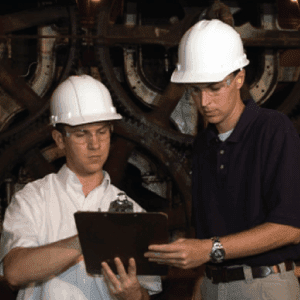
Safety is a key performance indicator and a priority for any business. Just like any other key performance metric, safety is measured. This measurement is a vital part of management's safety diagnosis and often forms the basis for recommended safety improvements. That is why it is so important for your overall business that you are measuring the right things and being proactive when it comes to workplace safety.
There are many ways to measure safety and finding the perfect measurement can be a difficult task. While most organizations are accustomed to tracking safety results by measuring past incidents, it is also important to track how effective your safety culture is at preventing future incidents.
Not Just Keeping Score
By measuring the frequency and severity of past incidents an organization is able to progress towards set safety compliance goals and judge the bottom-line effectiveness of their safety procedures. These reactionary statistics are great at telling you who got hurt, when they got hurt and how badly they got hurt. However, they do little to measure how effective your organization is at preventing future incidents.
Consider the following example. If your organization goes a long time without a serious incident and that is the main performance indicator you measure, your staff can become complacent and start to take safety for granted. By also measuring more proactive policies, your organization can ensure that safety is always a priority.
Measuring to Prevent Future Incidents
By measuring factors that can precede or indicate a future event and implementing policies that focus on training, awareness and development, your organization can begin to change its safety culture. This will drastically cut the rate of future health and safety issues.
Some ways in which leading organizations have developed these cutting edge safety measurements are by:
- Establishing an organization-wide statement of safety culture.
- Buy in from leadership and engagement with the process.
- Clearly defined and linked roles and responsibilities for all employees.
- Clearly defined accountability for all employees
- Consistent methods establishing targets and reporting performance.
- Consistent criteria for prioritizing issues and aligning resources.
- Recognition for positive behavior and performance.
Construction heavyweight Caterpillar underwent a safety transformation almost 10 years ago after they began losing business due to their safety record. They thought outside the box, implemented sweeping reform to how they measured safety and wound up saving the company $450 million by increasing productivity and drastically reducing days missed due to health and safety.
How Did They Do It?
Caterpillar's culture shift can best be summarized in the following quote:
"Define, train, measure and recognize. Do it by involving safety leaders from all levels of the organization to pursue foundational safety processes, root cause incident resolution and accountabilities for every job," said Caterpillar's Tim Crane. "We address safety the same way we address quality."
By shifting the way their organization approached safety, Caterpillar were able to reduce incidents, increase productivity, improve staff morale, be seen as an industry safety leader all while saving themselves millions of dollars in the process. The way you measure safety performance in your organization doesn't just potentially save lives…it saves money.










